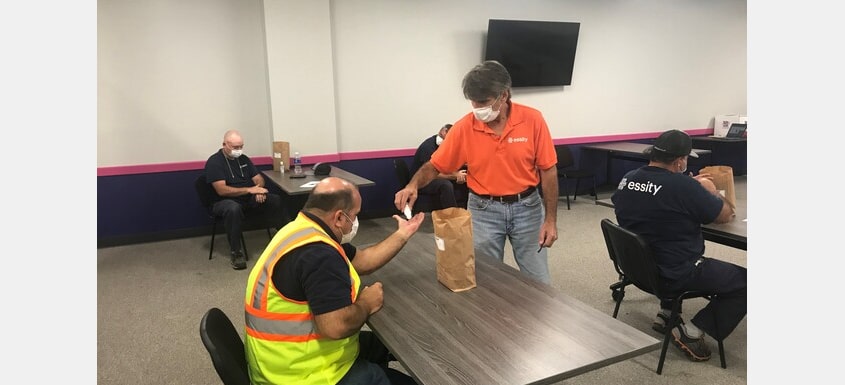Creating a safe and caring environment is important to our industry.
It’s our job to make sure employees are safe. There are plenty of opportunities to showcase and demonstrate best safety practices throughout our mills.
We spoke to Pete Petersen, Risk, Environmental, Safety, and Health (RESH) Manager for Essity’s Central Region about how Essity is creating a safe environment at their mills.
“Safety to me, means people,” Petersen said. “Our people are the most important part of our business and the key to no one of us getting injured.” Essity’s RESH team helps ensure that teams share best safety practices, along with providing support for staff learnings.
Additionally, each Essity site has its own “Because I Care (BIC)” observation program. The program helps employees work safely by completing structured observations and providing positive or corrective feedback to a team member based on how the observation went.
“Safety is not a number or policy—it is in each of our heart and souls. I Care is our cultural journey towards a safe and healthy workplace,” Petersen noted.
Safety doesn’t stop when Essity employees leave the doors of the mills.
“We also participate in local community meetings to provide input on ways to improve safety for our roadways or emergency response preparation,” Petersen said.
And that’s not all they do for the communities they serve.
“Our business and employees support our community when a tragedy occurs or there are other needs,” Petersen stated. “An example is the gracious outpouring of toys and materials delivered to individuals in Western Kentucky that were recovering from a tornado that destroyed their town.”
As an AF&PA member, Essity knows that sharing safety goals and best practices can help the industry.
“As an industry we support each other to help keep all of our associates safe. There are no competitive barriers when it comes to sharing best practices regarding safety,” Petersen said.
The American Forest & Paper Association (AF&PA) serves to advance U.S. paper and wood products manufacturers through fact-based public policy and marketplace advocacy. The forest products industry is circular by nature. AF&PA member companies make essential products from renewable and recycle resources, generate renewable bioenergy and are committed to continuous improvement through the industry’s sustainability initiative—Better Practices, Better Planet 2030: Sustainable Products for a Sustainable Future. The forest products industry accounts for approximately four percent of the total U.S. manufacturing GDP, manufactures nearly $300 billion in products annually and employs approximately 950,000 people. The industry meets a payroll of approximately $60 billion annually and is among the top 10 manufacturing sector employers in 45 states. Visit AF&PA online at afandpa.org or follow us on Twitter @ForestandPaper.
Source: AF&PA













